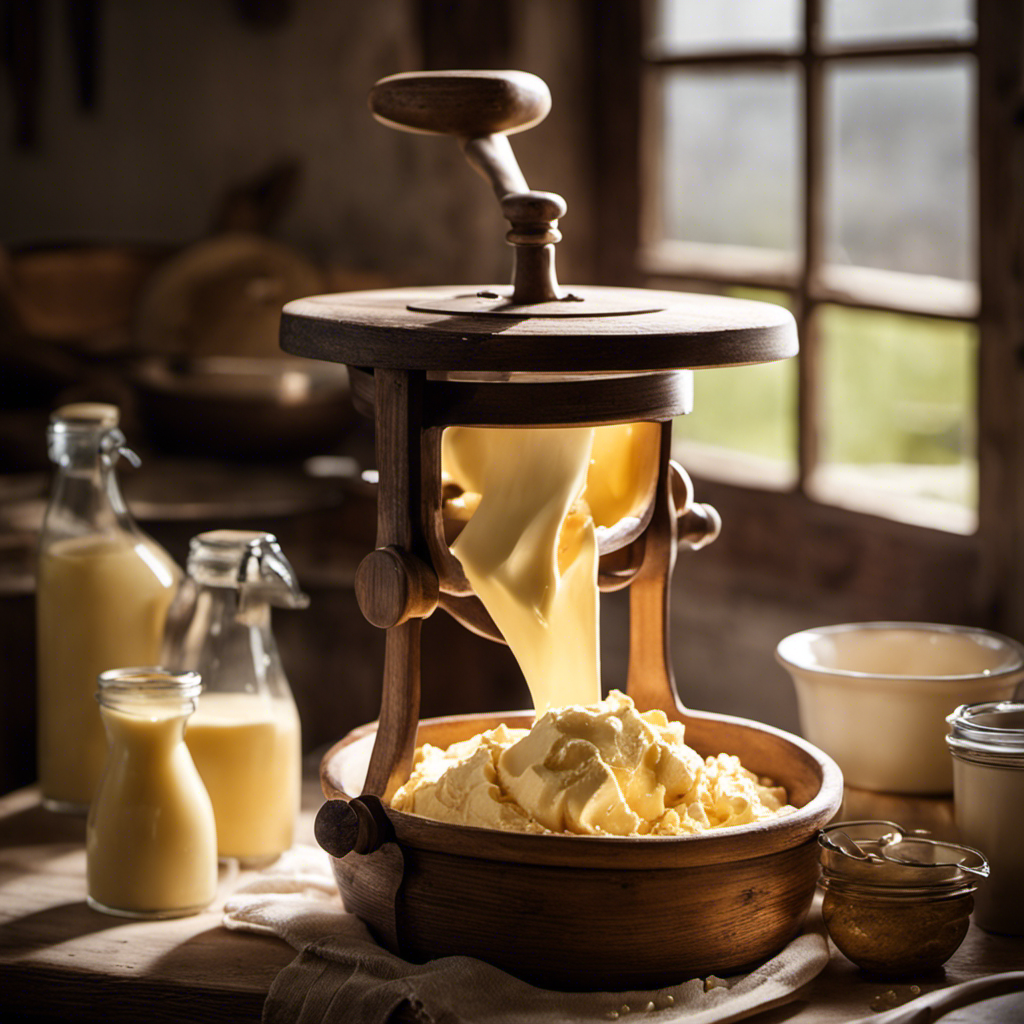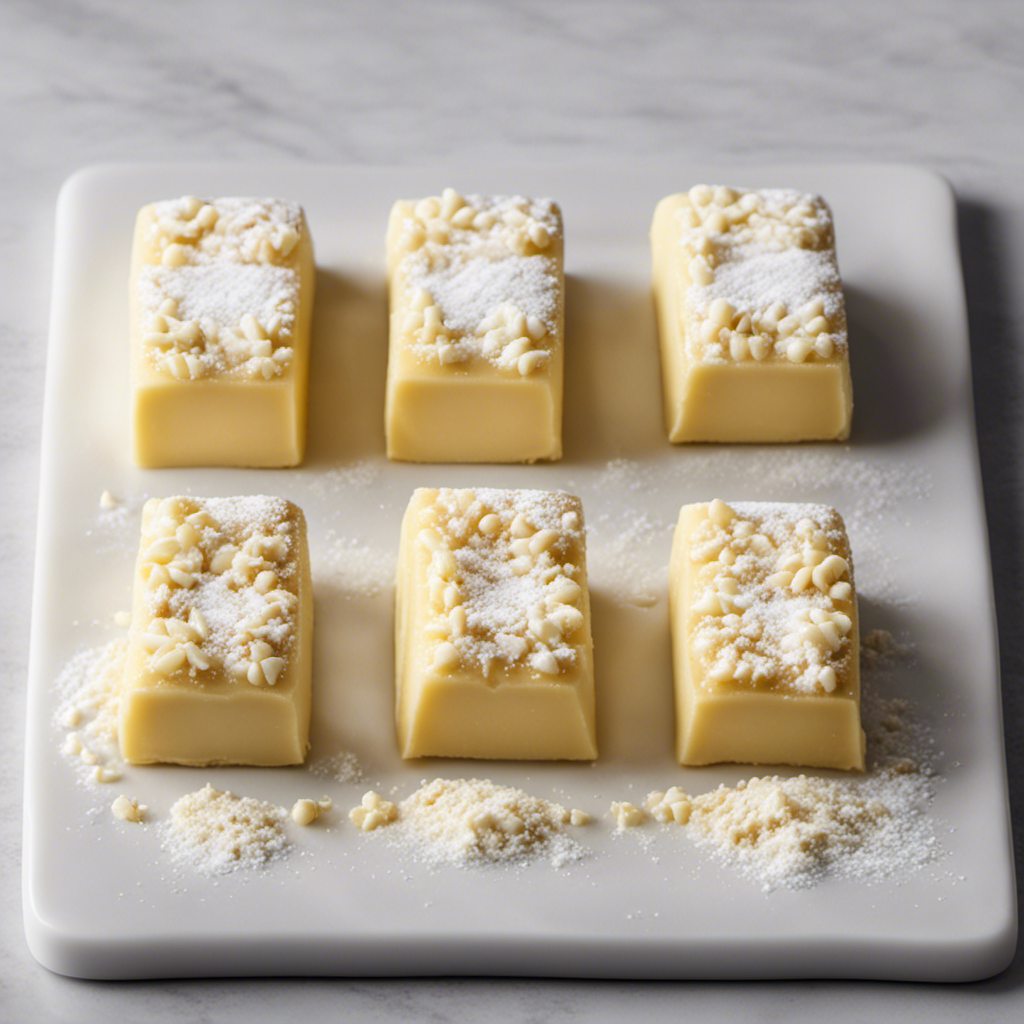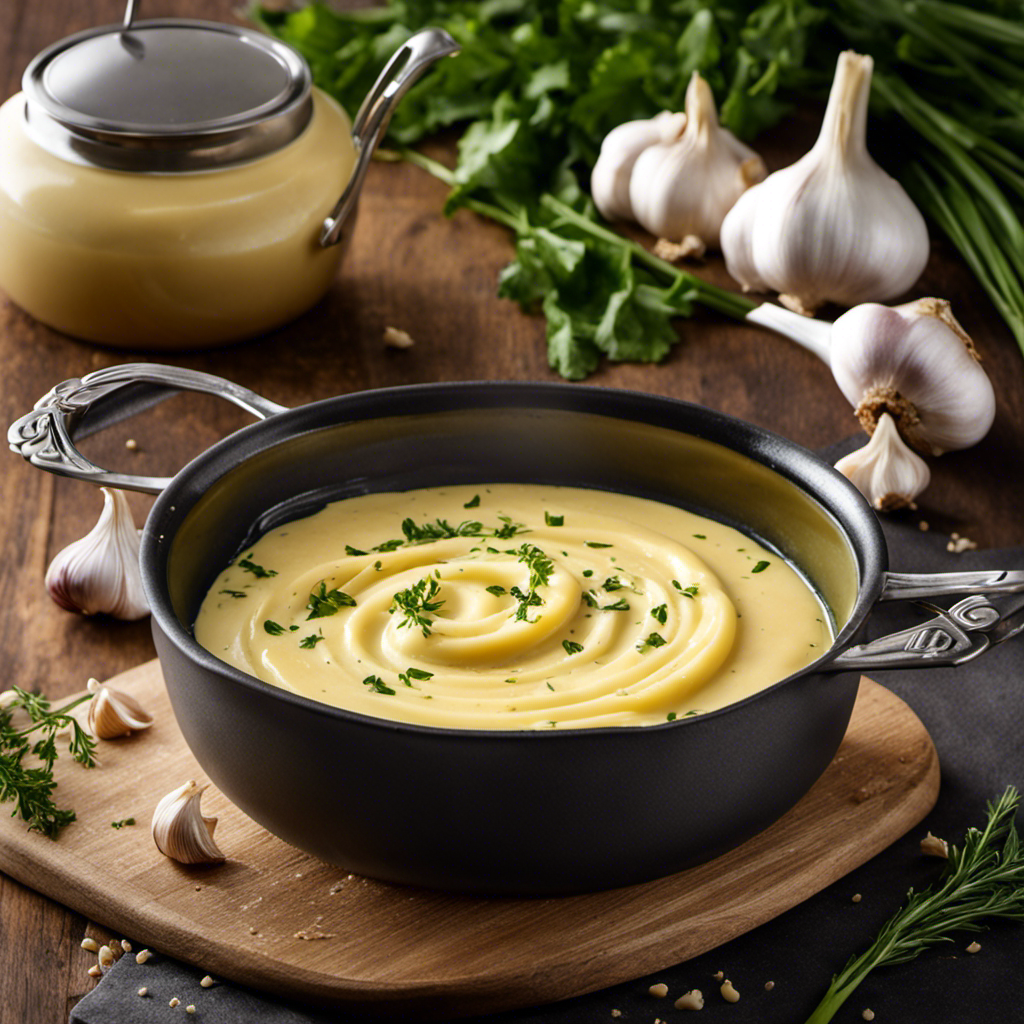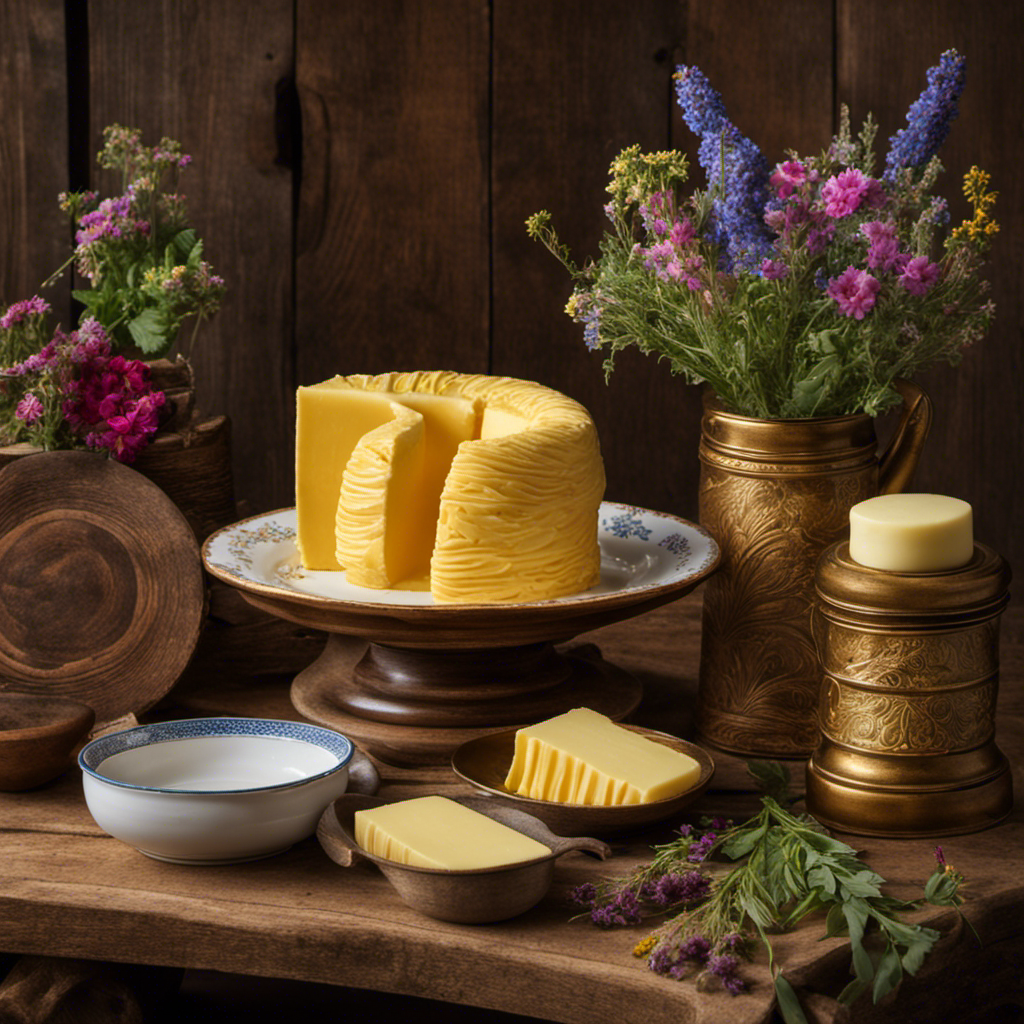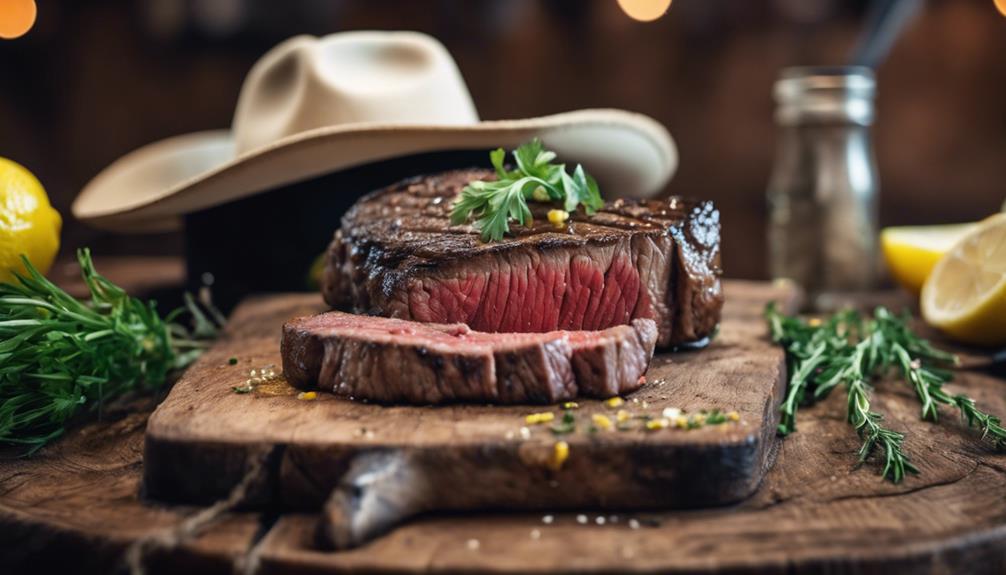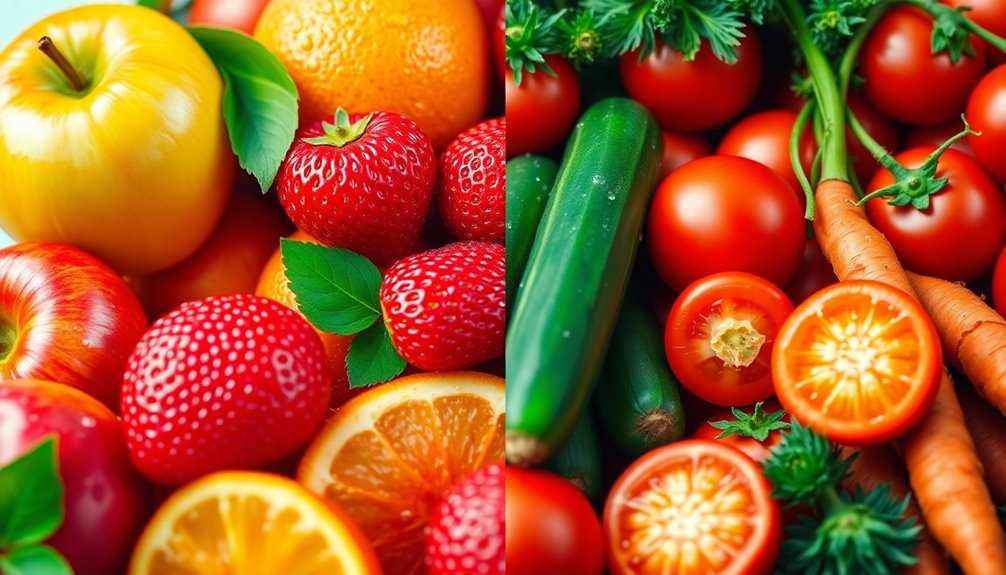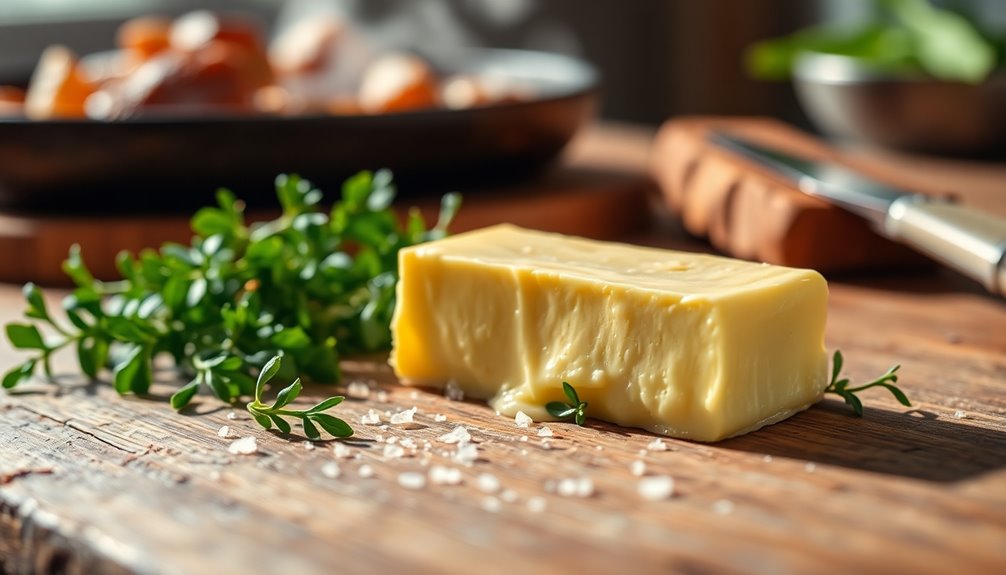I have always been intrigued by the process of making shea butter. It is the creamy and luxurious ingredient that can be found in numerous skincare products. After doing some research, I uncovered the fascinating process of how shea butter is created.
From the origins of shea nuts to the modern techniques used for production, every step plays a crucial role in producing the highest quality shea butter.
So, let’s dive in and explore the world of shea butter production together.
Key Takeaways
- Shea butter is derived from the nuts of the shea tree native to West Africa and is harvested through sustainable practices that provide employment opportunities for women in rural communities.
- Traditional methods of shea butter extraction involve heating and crushing the nuts to separate the butter from solids, which is time-consuming but essential for high-quality shea butter.
- Modern techniques include collection and cleaning of shea nuts, roasting to enhance flavor and fragrance, grinding into a fine paste, and filtering to remove impurities, ensuring only high-quality nuts are used.
- The process of shea butter pressing involves hydraulic pressing to extract oil from ground powder, followed by melting, cooling, straining, and specialized filtering methods to remove impurities and create a stable and firm texture. Packaging and storing shea butter in airtight containers in a cool, dry place is important to preserve its freshness and quality. Fair trade certification ensures that shea butter meets quality and fairness standards.
The Origins of Shea Butter
You might be wondering where shea butter comes from. Well, let me enlighten you.
Shea butter is derived from the nuts of the shea tree, which is native to West Africa. The process of making shea butter starts with the collection of the nuts, which are then dried and crushed to extract the oil. This oil is then heated and filtered to remove impurities, resulting in the creamy and rich shea butter that we all know and love.
One of the remarkable things about shea butter is its sustainable production. The shea tree grows naturally in the wild, without the need for extensive cultivation. This means that the production of shea butter has a minimal impact on the environment.
Additionally, the harvesting and processing of shea nuts provide employment opportunities for many women in rural communities. This has a significant economic impact, as it helps to empower these women and improve their livelihoods.
Harvesting Shea Nuts
When it comes to harvesting shea nuts, there are several key points to consider.
First, the process of shea nut collection involves gathering the nuts from the shea tree, which typically grows in the dry savannah regions of Africa.
Second, traditional harvesting methods involve climbing the tree and using long sticks to knock the nuts down, or shaking the branches to make them fall.
Lastly, sustainable sourcing practices aim to ensure that shea nuts are harvested in a way that does not harm the trees or the environment, promoting the long-term viability of the shea butter industry.
Shea Nut Collection
The first step in making shea butter is collecting the shea nuts. Shea nuts are the seeds found inside the fruit of the shea tree, which grows in the savannahs of Africa. Shea nut processing begins with the collection of ripe fruits that have fallen to the ground. The nuts are then carefully separated from the fruit pulp. This is usually done by hand, using traditional methods.
Once the nuts are collected, they are typically dried in the sun for several days to reduce their moisture content. After drying, the nuts are cracked open to reveal the kernel inside. The kernels are then roasted and ground into a paste, which is then processed to extract the shea butter.
Shea butter has numerous benefits, including its moisturizing and healing properties, making it a valuable ingredient in skincare products.
Transitioning to the next section, let’s explore the traditional harvesting methods of shea nuts.
Traditional Harvesting Methods
Using traditional methods, the ripe fruits that have fallen to the ground are carefully collected in the traditional harvesting of shea nuts. This process ensures that only the best quality nuts are gathered for the production of shea butter. The traditional harvesting methods have been passed down through generations, preserving the authenticity and sustainability of the process.
Here are the three key steps involved in the traditional harvesting of shea nuts:
-
Gathering: Local women, who are experts in this field, venture into the shea tree groves and collect the fallen fruits. They meticulously inspect each fruit to ensure it is fully ripe and ready for processing.
-
Sorting: Once the fruits are gathered, they are sorted to separate the shea nuts from the pulp. The nuts are then carefully washed to remove any impurities.
-
Drying: After being sorted, the shea nuts are spread out on mats or woven baskets to dry under the sun. This natural drying process allows the nuts to retain their nutritional value and ensures optimal quality for the extraction of shea butter.
Sustainable Sourcing Practices
To ensure sustainability, I can support local communities by sourcing shea nuts through environmentally friendly practices.
Ethical sourcing and fair trade are crucial components of sustainable shea butter production. By partnering with local communities and cooperatives, we can ensure that the shea nuts are harvested in a way that does not harm the environment or exploit the workers.
This means using methods that promote the regeneration of shea trees and protect the biodiversity of the surrounding ecosystems. Additionally, fair trade practices guarantee that the workers receive a fair wage for their labor and that their rights are respected.
Traditional Methods of Extraction
When it comes to extracting shea butter, there are traditional methods that have been used for generations. These methods involve the use of heat and crush techniques to break down the shea nuts and release the oils.
The process is done manually, with the nuts being crushed and heated to extract the butter. This natural and traditional process ensures that the shea butter retains its purity and all its beneficial properties.
Heat and Crush
The shea nuts are heated and then crushed to extract the butter. Heat treatment is an essential step in the process as it helps soften the nuts and make the extraction easier.
Here is a detailed description of the crushing process:
- The heated shea nuts are placed in a mortar and pestle or a mechanical crusher.
- The nuts are then crushed using a pounding motion or mechanical pressure.
- The crushing process breaks down the nuts into smaller pieces, allowing the oils to be released.
- The crushed nuts are then further processed to separate the butter from the remaining solids.
This heat and crush method is an effective way to extract shea butter, as it maximizes the yield and ensures the highest quality.
The next step in the extraction process involves manual techniques to separate the butter from the solids.
Manual Extraction Process
Using manual techniques, I separate the butter from the remaining solids after the heat and crush process. This step is crucial in the traditional techniques of making shea butter. It is a handmade process that requires skill and precision.
After the nuts are heated and crushed, the resulting paste is placed in a large container. I then manually separate the butter from the solids by kneading and pressing the paste. The butter gradually separates and rises to the surface, while the remaining solids sink to the bottom. This manual extraction process ensures that only the pure butter is collected, free from any impurities. It is a time-consuming process but essential for producing high-quality shea butter.
Transitioning into the subsequent section, the natural and traditional methods used in shea butter production guarantee its authenticity and effectiveness.
Natural and Traditional
In the natural and traditional methods, skill and precision are required to manually separate the butter from the solids. This meticulous process ensures the highest quality shea butter. Here are some key points to understand about traditional extraction methods and the benefits of shea butter:
-
Traditional extraction methods:
-
The shea nuts are collected and dried in the sun for several days.
-
The dried nuts are then crushed and roasted to release the oils.
-
The roasted nuts are ground into a paste and mixed with water.
-
Benefits of shea butter:
-
Moisturizing properties: Shea butter is rich in fatty acids and vitamins, making it an excellent moisturizer for the skin.
-
Anti-inflammatory effects: The natural compounds in shea butter can help soothe and calm irritated skin.
-
Anti-aging properties: Shea butter contains antioxidants that can help reduce the appearance of wrinkles and fine lines.
Modern Techniques for Shea Butter Production
Modern techniques have revolutionized the production of shea butter. Through the use of modern machinery and sustainable practices, the process of extracting shea butter has become more efficient and environmentally friendly.
First, the nuts are collected from the shea tree and then cleaned to remove any impurities.
Next, they are roasted to enhance the flavor and fragrance of the butter.
After roasting, the nuts are ground into a fine paste using modern grinding machines.
This paste is then mixed with water and kneaded to separate the oil from the solids.
The oil is then heated and filtered to remove any remaining impurities.
Finally, the pure shea butter is cooled, solidified, and packaged for sale.
These modern techniques not only increase production efficiency but also ensure that shea butter is produced in a sustainable and eco-friendly manner.
Sorting and Cleaning the Shea Nuts
After the shea nuts have been harvested and dried, the next step in the shea butter production process is sorting and cleaning. This crucial step ensures that only the highest quality nuts are used for processing.
Here are the key steps involved in sorting and cleaning the shea nuts:
-
Removal of debris: The nuts are carefully inspected and any foreign matter such as leaves, twigs, or stones is removed.
-
Separation of damaged nuts: Nuts that are discolored, moldy, or rotten are separated from the good ones to maintain quality control.
-
Sizing and grading: The nuts are sorted based on their size and quality. This helps to ensure uniformity during processing.
By carefully sorting and cleaning the shea nuts, we can guarantee that only the best quality nuts are used, resulting in high-quality shea butter.
With the shea nuts sorted and cleaned, the next step is to roast and grind them to extract the precious shea butter.
Roasting and Grinding the Shea Nuts
Now that you have sorted and cleaned the shea nuts, it’s time to roast and grind them to extract the precious oil. Roasting the nuts is a crucial step in the shea butter making process as it enhances the aroma and flavor of the final product. There are various roasting techniques used, but the most common one involves placing the nuts in a hot pan or oven and gently stirring them until they turn a deep brown color. This process helps to break down the nuts and release the oils trapped within. After roasting, the nuts are cooled and then ground into a fine powder using grinding methods such as stone grinding or mechanical grinding. This grinding process further releases the oils, creating a smooth and creamy texture.
| Roasting Techniques | Grinding Methods |
|---|---|
| Pan Roasting | Stone Grinding |
| Oven Roasting | Mechanical Grinding |
| Open Fire Roasting | |
| Indirect Heat Roasting |
The Process of Shea Butter Pressing
During the pressing process, the ground shea nut powder is placed in a hydraulic press to extract the oil. This process is crucial in producing shea butter, as it separates the oil from the nut powder.
Here’s a closer look at how the pressing process works:
- The hydraulic press applies pressure to the shea nut powder, causing the oil to be squeezed out.
- The extracted oil is collected and set aside for further processing.
- The remaining solid residue, known as shea cake, is often used as animal feed or as a natural fertilizer.
Shea butter benefits include moisturizing the skin, reducing inflammation, and providing nourishment to the hair. Shea butter uses range from skincare products like lotions and creams to hair masks and lip balms.
With the oil extracted through pressing, the next step in the shea butter production process is to purify and filter the oil to obtain the final product.
Purifying and Filtering the Shea Butter
To purify and filter the shea butter, you’ll need to melt it down and remove any impurities. This process is essential to ensure that the final product is of high quality and free from any unwanted substances. There are various purifying techniques and filtering methods that can be used to achieve this.
One common method is to melt the shea butter at a low temperature to separate the impurities from the pure butter. Once melted, the butter is then allowed to cool down and solidify, which helps to further separate any remaining impurities. Another technique is to use a fine mesh or cheesecloth to strain the melted shea butter, effectively removing any larger particles or debris.
In addition to these techniques, there are also specialized filtering methods that can be employed. This can include the use of activated charcoal, which helps to absorb and remove impurities from the shea butter. Another option is to use a filtration system that utilizes multiple layers of different filter media, such as activated carbon and micron filters, to ensure thorough purification.
Overall, purifying and filtering shea butter is an important step in the production process, as it helps to ensure the final product is clean, pure, and suitable for use in various cosmetic and skincare applications.
| Purifying Techniques | Filtering Methods |
|---|---|
| Melting and Solidifying | Straining with a Mesh |
| Activated Charcoal | Filtration Systems |
| Cooling and Separating | Multiple Layer Filters |
Cooling and Solidifying Shea Butter
Once the shea butter has been melted down, you can allow it to cool and solidify, which will aid in separating any remaining impurities.
The cooling process is an important step in the shea butter-making process as it helps to remove any excess moisture and allows the butter to solidify into a smooth and creamy consistency.
During the cooling process, the shea butter undergoes a solidification process where it transforms from a liquid state to a solid state. This solidification process involves the alignment of the fat molecules within the butter, creating a stable and firm texture.
As the shea butter cools and solidifies, any impurities or sediments present in the butter will settle at the bottom, making it easier to separate them from the pure butter.
Packaging and Storing Shea Butter
When packaging and storing your shea butter, make sure to use airtight containers to preserve its freshness and extend its shelf life. Proper packaging techniques are crucial to maintain the quality and effectiveness of this valuable product.
Choose containers made of glass or dark-colored plastic to protect the shea butter from exposure to light, which can degrade its properties. Additionally, consider using a tin or aluminum container with a tight-fitting lid to prevent air from entering and causing oxidation.
It is also important to store the shea butter in a cool, dry place away from direct sunlight and heat sources. This will help to prevent the butter from melting or becoming rancid.
Shea Butter Quality and Certification Standards
After learning about the packaging and storing of shea butter, let’s dive into the quality and certification standards in the shea butter industry.
It’s important to ensure that the shea butter we use meets certain standards for both quality and fairness. One way to ensure this is through fair trade certification. Here are some key points to consider:
-
Quality Standards:
-
Shea butter should have a smooth texture and a mild, nutty aroma.
-
It should be free from any impurities or foreign particles.
-
The color of shea butter can range from ivory to yellow, depending on the extraction process and region.
-
Fair Trade Certification:
-
Fair trade certification ensures that shea butter is produced and traded ethically.
-
It promotes fair prices for shea butter producers, empowering women in rural communities.
-
Fair trade certification also encourages sustainable farming practices and supports environmental conservation.
Frequently Asked Questions
Can Shea Butter Be Used by People With Nut Allergies?
Yes, shea butter can be used by people with nut allergies. However, it is important to consult with a healthcare professional first. There are also shea butter alternatives available that offer similar benefits for the skin.
How Long Does It Take for Shea Nuts to Mature and Be Ready for Harvesting?
How long does it take for shea nuts to mature and be ready for harvesting? Well, shea nut growth is a gradual process. It typically takes around 15 years for the shea tree to produce mature nuts that are ready for harvesting.
What Are the Different Types of Shea Butter Available in the Market?
There are various types of shea butter available in the market, each with its own unique benefits. It is important to choose the right type based on your skincare needs and preferences.
Is Shea Butter Production Sustainable and Environmentally Friendly?
Shea butter production is sustainable and environmentally friendly. The process involves handcrafting, which promotes fair trade and supports local communities. It also has a low environmental impact, as it doesn’t require any harmful chemicals or synthetic additives.
How Can Consumers Determine the Quality and Authenticity of Shea Butter Products?
Determining the quality and authenticity of shea butter products can be done by checking for certifications, reading product labels for ingredients and processing methods, and researching the reputation of the brand or manufacturer.
Conclusion
In conclusion, learning about the process of making shea butter has been an eye-opening experience.
From the traditional methods passed down through generations to the modern techniques used today, it is clear that producing shea butter is a labor-intensive and meticulous process.
Like the transformation of shea nuts into the smooth and creamy butter, this journey has taught me that sometimes, in order to achieve something truly valuable, we must go through a rigorous process of refinement and purification.

